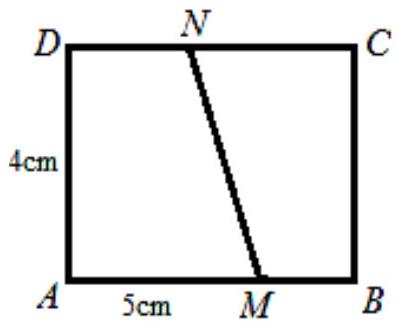Appearance
question:a=log_{2}0.7, b=left( frac{1}{5} right)^{frac{2}{3}}, c=left( frac{1}{2} right)^{-3}, then the relationship of the sizes of a, b, and c is ( )A: c>b>aB: b>c>aC: c>a>bD: a>b>c
answer:Solution: Since a=log_{2}0.71,Therefore, c>b>a,Hence, the correct option is: boxed{text{A}}This problem is solved by utilizing the monotonicity of exponential and logarithmic functions. It examines the comparison of the sizes of three numbers, which is a basic question. When solving the problem, it is important to carefully read the question and appropriately apply the monotonicity of exponential and logarithmic functions.
question:1. At what speed does mathrm{E} min left(sigma_{2 n}, 2 nright) tend to infty as n rightarrow infty? (Here sigma_{2 n}=min left{1 leqslant k leqslant 2 n: S_{k}=0right} and we assume sigma_{2 n}=infty (or left.sigma_{2 n}=2 nright), if S_{k} neq 0 for all 1 leqslant k leqslant 2 n.)
answer:Solution. According to item 1 of V1.I. 10, we havemathrm{E} min left(sigma_{2 n}, 2 nright)=sum_{k=1}^{n} u_{2(k-1)}+2 n u_{2 n}==sum_{k=0}^{n-1} 2^{-2 k} C_{2 k}^{k}+2 n cdot 2^{-2 n} C_{2 n}^{n}By Stirling's formula, 2 n cdot 2^{-2 n} C_{2 n}^{n} sim 2 sqrt{n pi^{-1}}, and by problem I.9.3, the first term in formula (*) is equivalent to 2 sqrt{n pi^{-1}}. Therefore, mathrm{E} min left(sigma_{2 n}, 2 nright) is equivalent to 4 sqrt{n pi^{-1}}.
question:Problem 6. Calculate 2 operatorname{arctg} 3+arcsin frac{3}{5}.
answer:Answer: pi.Solution. First solution. Let operatorname{arctg} 3 be denoted by alpha, and arcsin 3 / 5 by beta. Note that beta in(0, pi / 2), mathrm{a} operatorname{tg}^{2} beta=sin ^{2} beta /left(1-sin ^{2} betaright)=3^{2} / 4^{2}, from which operatorname{tg} beta=3 / 4; also operatorname{tg} alpha=3, alpha in(0, pi / 2).We find:begin{gathered}operatorname{tg}(2 alpha)=frac{2 operatorname{tg} alpha}{1-operatorname{tg}^{2} alpha}=frac{2 cdot 3}{1-3^{2}}=-frac{6}{8}=-frac{3}{4} operatorname{tg}(2 alpha+beta)=frac{operatorname{tg}(2 alpha)+operatorname{tg} beta}{1-operatorname{tg}(2 alpha) operatorname{tg} beta}=frac{-3 / 4+3 / 4}{1-(-3 / 4) cdot(3 / 4)}=0end{gathered}Finally, since 0<alpha<pi / 2,0<beta<pi / 2, then 0<2 alpha+beta<3 pi / 2. Therefore, 2 alpha+beta=pi.
question:Problem 2. Given is the rectangle A B C D with sides overline{A B}=5 mathrm{~cm} and overline{B C}=4 mathrm{~cm}. Point M lies on side A B, and point N lies on side C D. Determine the length of segment M N if the perimeters of quadrilaterals A M N D and M B C N are both 14 mathrm{~cm}.
answer:Solution. The perimeter of rectangle ABCD is equal to 2(5+4)=18 mathrm{~cm}. The sum of the perimeters of quadrilaterals AMND and MBCN is equal to 2 cdot 14=28 mathrm{~cm}.If we subtract these sums, we will get twice the length of segment MN. Therefore,overline{MN}=(28-18): 2=5 mathrm{~cm}
question:20. Patrick asks SpongeBob: "What is your lucky number?" SpongeBob says: "There is a sequence of numbers: 0,1,3,8, 21,55,144,377,987, cdots cdots Starting from the third number, each number multiplied by 3 is exactly equal to the sum of the numbers immediately before and after it. My lucky number is the remainder when the 2020th number in this sequence is divided by 6." So, SpongeBob's lucky number is qquad . (If it is divisible, then the remainder is 0)
answer:2
question:1 frac{2 cos 10^{circ}-sin 20^{circ}}{cos 20^{circ}}= qquad
answer:1 sqrt{3}.begin{aligned}frac{2 cos 10^{circ}-sin 20^{circ}}{cos 20^{circ}} & =frac{2 cos 10^{circ}left(1-cos 80^{circ}right)}{cos 20^{circ}}=frac{4 cos 10^{circ} sin ^{2} 40^{circ}}{cos 20^{circ}} & =8 cos 10^{circ} sin 40^{circ} sin 20^{circ} & =4 cos 10^{circ}left(cos 20^{circ}-cos 60^{circ}right) & =4 cos 10^{circ} cos 20^{circ}-2 cos 10^{circ} & =2left(cos 10^{circ}+cos 30^{circ}right)-2 cos 10^{circ} & =2 cos 30^{circ}=sqrt{3} .end{aligned}